International
Ukraine’s long-range drones using Western tech to hit Russia
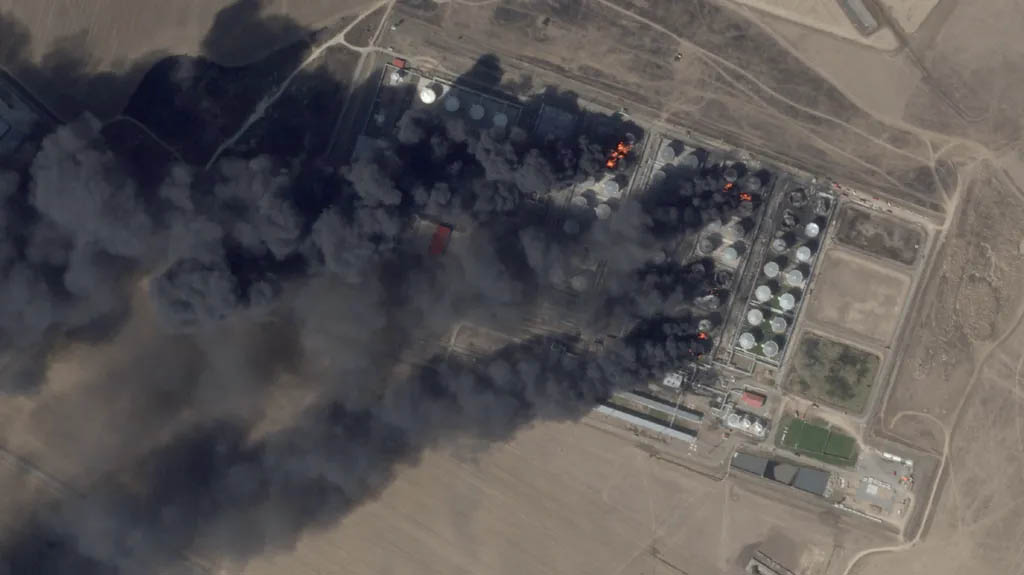
Ukraine’s long-range drones using Western tech to hit Russia
Western technology and finance are helping Ukraine carry out hundreds of long-range strikes inside Russia.
That is despite Nato allies still refusing to give Ukraine permission to use Western-supplied munitions to do so – mostly because of fears of escalation.
Ukraine has been stepping up its long-range strikes inside Russia over the past few months, launching scores of drones simultaneously at strategic targets several times a week.
The targets include air force bases, oil and ammunition depots and command centres.
Ukrainian firms are now producing hundreds of armed one-way attack drones a month, at a fraction of the cost it takes to produce a similar drone in the West.
One company told the BBC it was already creating a disproportionate impact on Russia’s war economy at a relatively small expense.
The BBC has been briefed by a number of those involved in these missions. They include one of Ukraine’s largest one-way attack drone manufacturers, as well as a big data company which has helped develop software for Ukraine to carry out these strikes.
Francisco Serra-Martins says the strategy is already creating huge dilemmas for Moscow. He believes that with extra investment, it will turn the tide of the war in Ukraine’s favour.
Eighteen months ago, the company he co-founded, Terminal Autonomy, didn’t even exist. It is now producing more than a hundred AQ400 Scythe long-range drones a month, with a range of 750km (465 miles). The company also makes hundreds of shorter range AQ100 Bayonet drones a month, which can fly a few hundred kilometres.
The drones are made of wood and are being assembled in former furniture factories in Ukraine.
READ ALSO:
- JUST IN: NCC gives final deadline for NIN-SIM linkage
- Woman allegedly stabs neighbour for having affairs with her husband
- 54-year-old Nigerian woman delivers 11 babies in Cotonou
Mr Serra-Martins, a former Australian Army Royal Engineer, set up the company with his Ukrainian co-founder, backed by US finance. It is one of at least three companies now producing drones in Ukraine at scale.
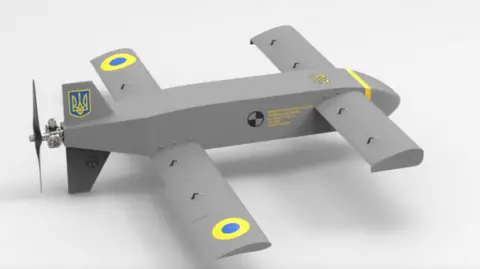
The AQ 400 Scythe drone is made of wood and has a range of 750km
He describes his drones as “basically flying furniture – we assemble it like Ikea”.
It takes about an hour to build the fuselage and half that time to put the brains inside it – the electronics, motor and explosives.
The company’s Bayonet drone costs a few thousand dollars. In contrast, a Russian air defence missile used to shoot it down can cost more than $1m.
It is not only cheap drones making the difference.
Palantir, a large US data analysis company, was one of the first Western tech companies to aid Ukraine’s war effort. It started by providing software to improve the speed and accuracy of its artillery strikes. Now it has given Ukraine new tools to plan its long-range drone strikes.
British engineers from Palantir, working with Ukrainian counterparts, have designed a programme to generate and map the best ways to reach a target. Palantir makes clear it is not involved in the missions, but has helped train more than 1,000 Ukrainians how to use its software.
The BBC has been shown how it works in principle. Using streams of data, it can map Russia’s air defences, radar and electronic jammers. The end product looks similar to a topographical chart.
The tighter the contours, the heavier the air defences. The locations have already been identified by Ukraine using commercial satellite imagery and signals intelligence.
Louis Mosley of Palantir says the programme is helping Ukraine to skirt around Russia’s electronic warfare and air defence systems to reach their target.
READ ALSO:
- Nigerian, two others get life jail over murder in UK
- Customs seize 1,000 parcels of cannabis hidden in truck
- NSCDC arrests four in Akwa Ibom for illegal mining, power line vandalism
“Understanding and visualising what that looks like across the entire battle space is really critical to optimising these missions,” he says.
The execution of the long-range drone strikes is being co-ordinated by Ukraine’s intelligence agencies, who work in secrecy. But the BBC has been told by other sources about some of the detail.
Scores of drones can be fired for any one mission – as many as 60 at one target.
The attacks are mostly carried out at night. Most will be shot down. As few as 10% may reach the target. Some drones are even shot down along the way by friendly fire – Ukraine’s own air defences.
Ukraine has had to work out ways to counter Russian electronic jamming. Terminal Autonomy’s Scythe drone uses visual positioning – navigating its course and examining the terrain by Artificial Intelligence. There is no pilot involved.
Palantir software will have already mapped the best routes. Mr Serra-Martins says flying a lot of drones is key to overwhelming and exhausting Russia’s air defences. So too is making the drones cheaper than the missiles trying to shoot them down, or the targets they are trying to hit.
Prof Justin Bronk of the Royal United Services Institute says Ukraine’s long-range drone attacks are creating dilemmas for Moscow. Although Russia has a lot of air defences, it still cannot protect everything.
Prof Bronk says Ukraine’s long-range strikes are showing ordinary Russians that “the state can’t defend them fully and that Russia is vulnerable”.
Ukrainian drones have been spotted more than 1,000km (620 miles) inside Russia. They have been shot down over Moscow.
But the focus has been on military sites. The map below highlights just a handful of the dozen targets hit over the past few months. They include five Russian airbases.
Prof Justin Bronk says targeting Russian airbases has so far been the only effective way Ukraine has to respond to Russia’s glide bombs.
It has forced Russia to move aircraft to bases further away and reduce the frequency of their attacks. Satellite imagery shows how Ukrainian drones have successfully damaged hangars at its Marynovka airbase.
Ukraine clearly believes it could do even more with the help of Western-made long-range weapons. But so far, allies have rejected Kyiv’s pleas.
There is still a lingering fear, especially in Washington and Berlin, that it could drag the West further into the conflict. But that hasn’t stopped Western companies and finance from helping Ukraine.
Ukraine is still largely having to rely on its home-grown efforts, convinced that bringing the war to Russia is a key to winning this war.
Francisco Serra-Martins also believes Western manufacturers are still “woefully unprepared” to fight high-intensity warfare – producing far fewer long-range weapons at a much higher cost. He says what Ukraine really needs now “is a lot of good enough systems”.
The BBC has talked to one Ukrainian company which is already developing a new cruise missile, at least 10 times cheaper than a British-made Storm Shadow missile.
Despite the West’s misgivings, Ukraine is planning to step up its attacks on Russia. Mr Serra-Martins says: “What you’re seeing now is like nothing compared to what you’ll see by the end of the year.”
Ukraine’s long-range drones using Western tech to hit Russia
BBC
International
Syria not threat to world, rebel leader al-Sharaa tells BBC
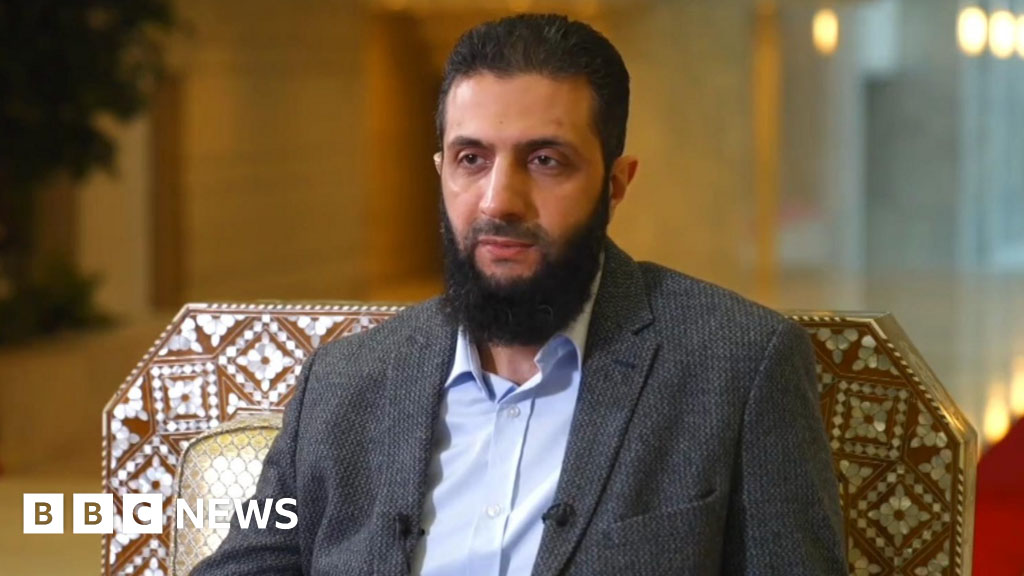
Syria not threat to world, rebel leader al-Sharaa tells BBC
The de facto leader of Syria, Ahmed al-Sharaa, has said the country is exhausted by war and is not a threat to its neighbours or to the West.
In an interview with the BBC in Damascus, he called for sanctions on Syria to be lifted.
“Now, after all that has happened, sanctions must be lifted because they were targeted at the old regime. The victim and the oppressor should not be treated in the same way,” he said.
Sharaa led the lightning offensive that toppled Bashar al-Assad’s regime less than two weeks ago. He is the leader of the Hayat Tahrir al-Sham (HTS), the dominant group in the rebel alliance, and was previously known by his nom de guerre of Abu Mohammed al-Jolani.
He said HTS should be de-listed as a terrorist organisation. It is designated as one by the UN, US, EU and UK, among many others, as it started as a splinter group of al-Qaeda, which it broke away from in 2016.
Sharaa said HTS was not a terrorist group.
They did not target civilians or civilian areas, he said. In fact, they considered themselves to be victim of the crimes of the Assad regime.
He denied that he wanted to turn Syria into a version of Afghanistan.
READ ALSO:
- Tinubu’s 2025 budget will increase poverty, worsen economy – PDP
- Real Madrid outclass Pachuca to win FIFA Intercontinental Cup
- Israel hits ports, energy sites in Yemen after missile intercepted
Sharaa said the countries were very different, with different traditions. Afghanistan was a tribal society. In Syria, he said, there was a different mindset.
He said he believed in education for women.
“We’ve had universities in Idlib for more than eight years,” Sharaa said, referring to Syria’s north-western province that has been held by rebels since 2011.
“I think the percentage of women in universities is more than 60%.”
And when asked whether the consumption of alcohol would be allowed, Sharaa said: “There are many things I just don’t have the right to talk about because they are legal issues.”
He added that there would be a “Syrian committee of legal experts to write a constitution. They will decide. And any ruler or president will have to follow the law”.
Sharaa was relaxed throughout the interview, wearing civilian clothes, and tried to offer reassurance to all those who believe his group has not broken with its extremist past.
Many Syrians do not believe him.
The actions of Syria’s new rulers in the next few months will indicate the kind of country they want Syria to be – and the way they want to rule it.
Syria not threat to world, rebel leader al-Sharaa tells BBC
BBC
International
Israel hits ports, energy sites in Yemen after missile intercepted
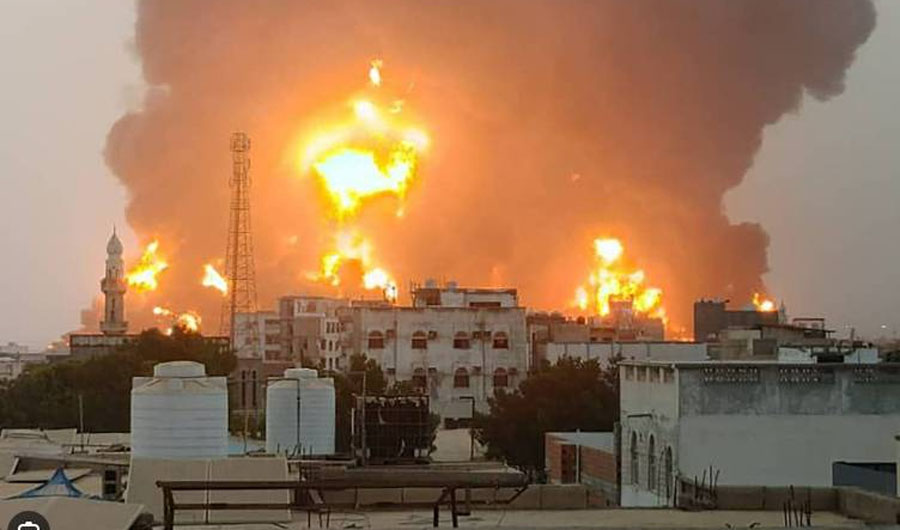
Israel hits ports, energy sites in Yemen after missile intercepted
JERUSALEM: Israel said Thursday it struck ports and energy infrastructure it alleges are used by Houthi militants, after intercepting a missile fired by the group.
Israel’s military said it “conducted precise strikes on Houthi military targets in Yemen — including ports and energy infrastructure in Sanaa, which the Houthis have been using in ways that effectively contributed to their military actions.”
The announcement came shortly after Israel said it had intercepted a missile fired from Yemen.
Al-Masira, a media channel belonging to the Houthis, said a series of “aggressive raids” were launched in the Yemeni capital of Sanaa and the port city of Hodeidah.
It reported raids that “targeted two central power plants” in Yemen’s capital Sanaa, while in Hodeidah it said “the enemy launched four aggressive raids targeting the port… and two raids targeting” an oil facility.
The strikes were the second time this week that Israel’s military has intercepted a missile from Yemen.
On Monday, the Houthis claimed a missile launch they said was aimed at “a military target of the Israeli enemy in the occupied area of Yaffa” — a reference to Israel’s Tel Aviv area.
READ ALSO:
- Gaza mediators intensify ceasefire efforts, Israeli strikes kill 20 people
- PDP expels South-East national vice chairperson over anti-party activities
- Your information on $1bn investment misleading, Dangote Refinery replies NNPCL
Also Monday, an Israeli navy missile boat intercepted a drone in the Mediterranean after it was launched from Yemen, the military said.
The Houthi militants have said they are acting in solidarity with Palestinians and pledged Monday to continue operations “until the aggression on Gaza stops and the siege is lifted.”
On December 9, a drone claimed by Houthis exploded on the top floor of a residential building in the central Israel city of Yavne, causing no casualties.
In July, a Houthi drone attack in Tel Aviv killed an Israeli civilian, prompting retaliatory strikes on the Yemeni port of Hodeidah.
The Houthis have also regularly targeted shipping in the Red Sea and the Gulf of Aden, leading to retaliatory strikes on Houthi targets by United States and sometimes British forces.
Israeli military spokesman Daniel Hagari said the group had become a “global threat,” pointing to Iran’s support for the militants.
“We will continue to act against anyone, anyone in the Middle East, that threatens the state of Israel,” he said.
Israel hits ports, energy sites in Yemen after missile intercepted
International
Gaza mediators intensify ceasefire efforts, Israeli strikes kill 20 people
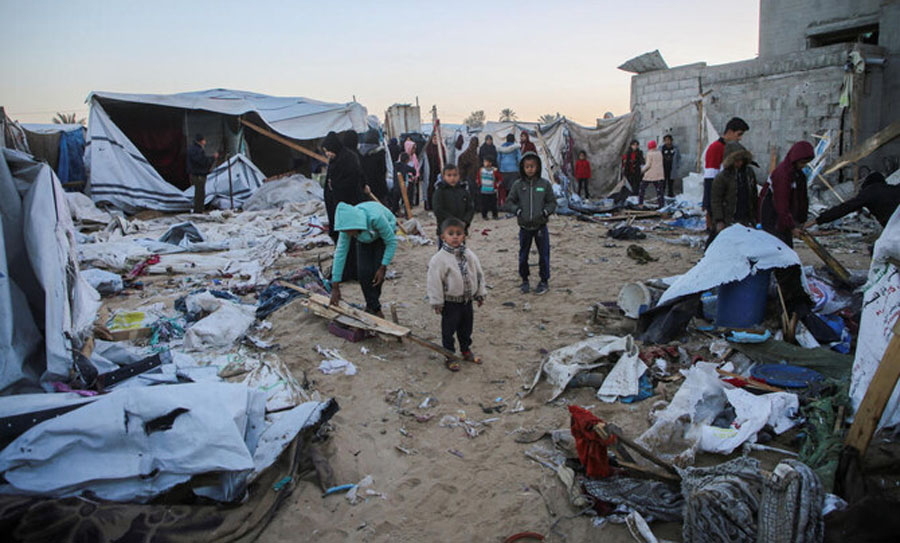
Gaza mediators intensify ceasefire efforts, Israeli strikes kill 20 people
CAIRO: The United States, joined by Arab mediators, sought on Wednesday to conclude an agreement between Israel and Hamas to halt the 14-month-old war in the Gaza Strip where medics said Israeli strikes killed at least 20 Palestinians overnight.
A Palestinian official close to the negotiations said on Wednesday that mediators had narrowed gaps on most of the agreement’s clauses. He said Israel had introduced conditions which Hamas rejected but would not elaborate.
On Tuesday, sources close to the talks in Cairo, the Egyptian capital, said an agreement could be signed in coming days on a ceasefire and a release of hostages held in Gaza in return for Palestinian prisoners held by Israel.
Medics said an Israeli airstrike killed at least 10 people in a house in the northern town of Beit Lahiya while six were killed in separate airstrikes in Gaza City, Nuseirat camp in central areas, and Rafah near the border with Egypt.
In Beit Hanoun in the northern Gaza Strip, medics said four people were killed in an airstrike on a house. There was no immediate comment from the Israeli military spokesman.
Israeli forces have operated in the towns of Beit Hanoun and Beit Lahiya as well as the nearby Jabalia camp since October, in a campaign the military said aimed to prevent Hamas militants from regrouping.
Palestinians accuse Israel of carrying out acts of “ethnic cleansing” to depopulate the northern edge of the enclave to create a buffer zone. Israel denies it.
READ ALSO:
- PDP expels South-East national vice chairperson over anti-party activities
- Your information on $1bn investment misleading, Dangote Refinery replies NNPCL
- Many die at Ibadan children’s Christmas party stampede, organisers arrested
Hamas does not disclose its casualties, and the Palestinian health ministry does not distinguish in its daily death toll between combatants and non-combatants.
On Wednesday, the Israeli military said it struck a number of Hamas militants planning an imminent attack against Israeli forces operating in Jabalia.
Later on Wednesday, Muhammad Saleh, director of Al-Awda Hospital in Jabalia, said Israeli shelling in the vicinity damaged the facility, wounding seven medics and one patient inside the hospital.
The Israeli military had no immediate comment.
In the Central Gaza camp of Bureij, Palestinian families began leaving some districts after the army posted new evacuation orders on X and in written and audio messages to mobile phones of some of the population there, citing new firing of rockets by Palestinian militants from the area.
CEASEFIRE GAINS MOMENTUM
The US administration, joined by mediators from Egypt and Qatar, has made intensive efforts in recent days to advance the talks before President Joe Biden leaves office next month.
In Jerusalem, Israeli President Isaac Herzog met Adam Boehler, US President-elect Donald Trump’s designated envoy for hostage affairs. Trump has threatened that “all hell is going to break out” if Hamas does not release its hostages by Jan. 20, the day Trump returns to the White House.
CIA Director William Burns was due in Doha on Wednesday for talks with Qatari Prime Minister Sheikh Mohammed bin Abdulrahman Al-Thani on bridging remaining gaps between Israel and Hamas, other knowledgeable sources said. The CIA declined to comment.
Israeli negotiators were in Doha on Monday looking to bridge gaps between Israel and Hamas on a deal Biden outlined in May.
There have been repeated rounds of talks over the past year, all of which have failed, with Israel insisting on retaining a military presence in Gaza and Hamas refusing to release hostages until the troops pulled out.
The war in Gaza, triggered by a Hamas-led attack on communities in southern Israel that killed some 1,200 people and saw more than 250 abducted as hostages, has sent shockwaves across the Middle East and left Israel isolated internationally.
Israel’s campaign has killed more than 45,000 Palestinians, displaced most of the 2.3 million population and reduced much of the coastal enclave to ruins.
Gaza mediators intensify ceasefire efforts, Israeli strikes kill 20 people
ARAB NEWS
-

 Railway10 hours ago
Railway10 hours agoLagos Rail Mass Transit part of FG free train ride – NRC
-

 metro1 day ago
metro1 day agoCourt stops customs from seizing imported rice in open market
-

 metro2 days ago
metro2 days agoFG transfers electricity market regulatory oversight in Lagos to LASERC
-

 metro2 days ago
metro2 days agoAfe Babalola: Court grants Dele Farotimi bail, barred from media interviews
-

 metro2 days ago
metro2 days agoIbadan stampede: Tinubu orders probe as death toll hits 40
-

 News2 days ago
News2 days agoAdebayo Ogunlesi, 2 other Nigerians make Forbes 50 wealthiest Black Americans list 2024
-

 metro3 days ago
metro3 days agoAbuja demolition: Soldiers attack FCTA officials, seize vehicles
-

 metro21 hours ago
metro21 hours agoIbadan stampede: Ooni reacts after arrest of ex-wife













